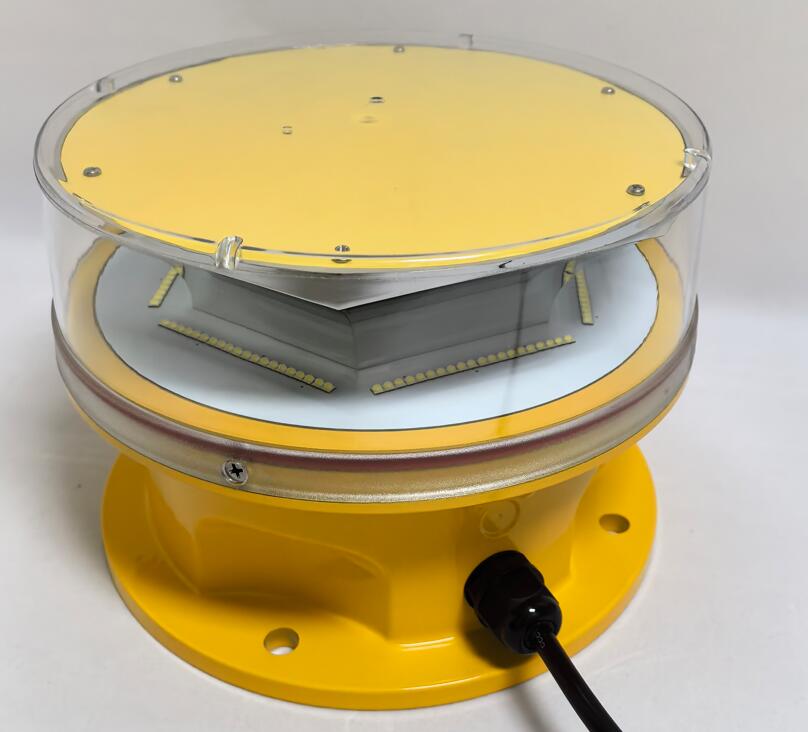Airfield Obstruction Lights: Safeguarding Aviation's Critical Zones
As aviation infrastructure expands globally, airfield obstruction lights have become indispensable safety components. These specialized lighting systems mark hazards on and around airports, ensuring safe aircraft operations during all visibility conditions. Unlike standard obstruction lighting, airfield systems must meet exceptionally rigorous standards to protect high-traffic flight zones. This article explores their unique requirements, technological specifications, and evolving role in modern aviation safety.
The Critical Role of Airfield-Specific Lighting
Airfield obstruction lights serve distinct purposes from their general aviation counterparts:
Runway Protection - Marking equipment, buildings, and terrain near active runways
Taxiway Guidance - Identifying edges and obstacles along aircraft movement paths
Approach Zone Safety - Illuminating structures in critical flight corridors

Construction Zone Awareness - Temporary marking of work areas on airfields
ICAO Annex 14 and FAA AC 150/5345-43J establish strict specifications for these systems, requiring higher reliability and more precise light distribution than standard obstruction lighting.
| airfield obstruction lights |
Technical Specifications for Airfield Systems
Light Intensity Classes
L-810 - Low-intensity red lights for permanent obstacles
L-864 - Medium-intensity red/white lights for taller structures
| airfield obstruction light |
L-865 - High-intensity white strobes for critical zones
Unique Features
Dual-circuit redundancy for continuous operation
Precision beam angles to avoid pilot glare
Rapid flash sequences (40-60 flashes/minute) for enhanced recognition
Electromagnetic shielding to prevent interference with navigation systems
Cutting-Edge Airfield Lighting Technology
Modern airfield obstruction lights incorporate advanced engineering:
1. Adaptive LED Arrays
Automatically adjust intensity based on ambient conditions
Provide 50,000+ hours of maintenance-free operation
2. Smart Monitoring Systems
Real-time performance tracking via airport lighting control systems
Instant fault alerts to maintenance crews
3. Hybrid Power Solutions
Solar-charged battery systems with grid backup
Weather-resistant designs for extreme environments
4. Enhanced Durability
IK10-rated impact resistance
Corrosion-proof aluminum housings
-40°C to +70°C operational range
Specialized Applications at Airports
1. Runway End Safety Areas (RESA)
Red obstacle lights marking RESA boundaries
Synchronized flashing systems for enhanced visibility
2. Instrument Landing System (ILS) Critical Areas
Precision lighting for ILS-sensitive zones
Frequency-shielded designs to prevent signal interference
3. Apron Management
Blue edge lighting for ground vehicle routes
Elevated markers for service equipment storage areas
4. Construction Zones
Temporary high-intensity lighting for airfield projects
Rapid-deployment systems for emergency markings
Overcoming Airfield-Specific Challenges
Airport environments present unique obstacles for obstruction lighting:
1. Salt Corrosion
Coastal airports require marine-grade materials
Specialized coatings for de-icing fluid resistance
2. Jet Blast Effects
Reinforced mounting systems
Vibration-resistant electrical connections
3. Wildlife Hazards
Bird-deterrent designs
UV-reflective coatings to avoid insect attraction
4. Security Concerns
Tamper-proof housings
Restricted spectrum lighting for sensitive areas
Future Innovations in Airfield Lighting
Emerging technologies promise to transform airfield safety:
1. LiFi-Enabled Lights
Dual-purpose visible light communication
Real-time data transmission to aircraft
2. Autonomous Maintenance
Self-diagnosing systems with robotic cleaning
Predictive replacement scheduling via AI
3. Sustainable Solutions
Photovoltaic-integrated light heads
Recyclable material construction
4. Enhanced Situational Awareness
Augmented reality integration for ground crews
3D obstacle mapping for air traffic control
Airfield obstruction lights represent a specialized niche within aviation safety systems, requiring unparalleled reliability and precision. As airports expand and air traffic increases, these critical markers will play an even greater role in preventing ground and air collisions. The next generation of smart, sustainable airfield lighting solutions will not only enhance safety but also reduce maintenance costs and environmental impact.
For airport operators and aviation authorities, investing in advanced obstruction lighting technology is not merely regulatory compliance - it's a fundamental commitment to protecting lives in the world's most demanding flight environments. As we enter an era of urban air mobility and increased airport automation, airfield obstruction lights will remain essential sentinels guarding the complex interface between ground infrastructure and flight operations.
